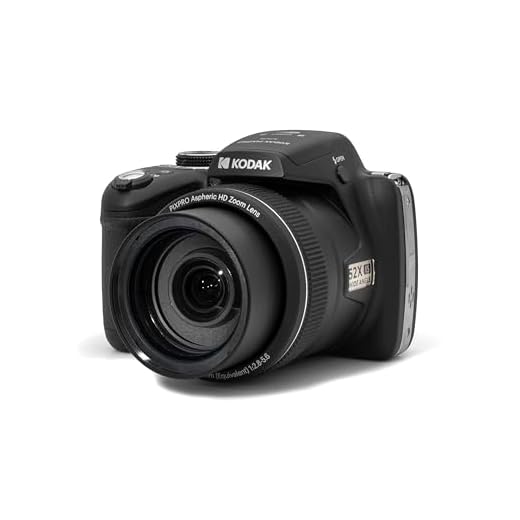


Mirrorless cameras have gained popularity in recent years due to their compact size and advanced features. One common question that arises when considering a mirrorless camera is whether or not it has optical zoom.
Optical zoom is a feature found in many traditional digital cameras and DSLRs, allowing users to zoom in on a subject without losing image quality. Unlike digital zoom, which simply enlarges the pixels in a photo, optical zoom physically adjusts the lens to magnify the image.
When it comes to mirrorless cameras, the answer is not as straightforward. Some mirrorless cameras come with built-in optical zoom lenses, while others require the use of interchangeable lenses to achieve zoom capabilities.
Do Mirrorless Cameras Offer Optical Zoom?
When it comes to optical zoom, mirrorless cameras typically do not have built-in optical zoom lenses. Instead, they rely on interchangeable lenses for zoom capabilities. This means that you can attach different lenses to your mirrorless camera to achieve various levels of zoom, from wide-angle to telephoto.
Some mirrorless cameras may come with a kit lens that offers a limited zoom range, but for more versatility, photographers often invest in additional lenses with specific zoom capabilities. These interchangeable lenses allow photographers to adapt to different shooting situations and achieve the desired zoom effect.
While mirrorless cameras do not have optical zoom built into the camera body like some compact cameras, they provide the flexibility of interchangeable lenses, giving photographers greater control over their zoom capabilities and overall image quality.
Understanding Optical Zoom
Optical zoom is a feature found in many digital cameras and camcorders that allows you to magnify an image without sacrificing image quality. Unlike digital zoom, which simply enlarges the existing pixels in an image, optical zoom physically adjusts the lens to bring the subject closer.
With optical zoom, the camera’s lens moves to change the focal length, providing a true zoom effect. This means that when you zoom in optically, you are capturing more detail of the subject without losing resolution. Optical zoom is generally preferred over digital zoom for capturing high-quality images.
Comparison with Digital Zoom
One of the key differences between optical zoom and digital zoom is how they achieve magnification. Optical zoom uses the camera’s lens to physically zoom in on the subject, resulting in higher image quality and detail. Digital zoom, on the other hand, simply enlarges the existing image digitally, resulting in a loss of image quality as the image is essentially being cropped and enlarged.
With mirrorless cameras, the majority of them come equipped with optical zoom capabilities through interchangeable lenses. This allows photographers to achieve true magnification without sacrificing image quality. On the other hand, digital zoom is often available as a feature on mirrorless cameras but should be used with caution as it can lead to a decrease in image quality.
| Feature | Optical Zoom | Digital Zoom |
|---|---|---|
| Quality | High, maintains image quality | Lower, results in loss of image quality |
| Method | Physically zooms in with the lens | Digitally enlarges the image |
| Usage | Ideal for capturing detailed images | Use with caution, can degrade image quality |
Optical Zoom in Mirrorless Cameras
Optical zoom is a key feature in traditional digital cameras, allowing users to zoom in on a subject without sacrificing image quality. Mirrorless cameras, like their DSLR counterparts, also offer optical zoom capabilities. Optical zoom works by adjusting the lens elements to magnify the image optically, resulting in clear and detailed photos.
When choosing a mirrorless camera, it’s important to consider the optical zoom range offered by the lens. Some mirrorless cameras come with interchangeable lenses, allowing users to select lenses with different zoom capabilities. This flexibility enables photographers to capture a wide range of subjects, from sweeping landscapes to detailed close-ups.
While optical zoom is a valuable feature in mirrorless cameras, it’s important to note that the zoom range may vary depending on the lens being used. Additionally, some mirrorless cameras also offer digital zoom options, which can further extend the zoom capabilities beyond the optical range. However, digital zoom may result in a loss of image quality, so it’s generally recommended to stick with optical zoom for the best results.
Advantages of Optical Zoom
1. Higher Image Quality: Optical zoom maintains the image quality as it physically zooms in on the subject without sacrificing resolution.
2. Better Low-Light Performance: Optical zoom allows for better performance in low-light conditions compared to digital zoom.
3. Accurate Zoom Control: Optical zoom provides more precise control over the zoom level, allowing for better composition of shots.
4. No Loss of Detail: With optical zoom, there is no loss of detail as the lens physically adjusts to zoom in, capturing more details in the image.
5. Improved Depth of Field: Optical zoom helps achieve a shallower depth of field, allowing for better separation of the subject from the background.
Zoom Lenses for Mirrorless Cameras
One of the key advantages of mirrorless cameras is their versatility when it comes to lens options. Mirrorless cameras can use a variety of zoom lenses to provide different focal lengths and magnification levels.
Zoom lenses for mirrorless cameras come in a range of options, from wide-angle to telephoto, allowing photographers to capture a wide variety of scenes and subjects. These lenses offer optical zoom capabilities, meaning that the lens physically extends and retracts to adjust the focal length and magnification of the image.
With advancements in lens technology, zoom lenses for mirrorless cameras can provide high-quality images with minimal distortion and excellent clarity throughout the zoom range. This makes them ideal for capturing everything from landscapes to portraits with ease.
When choosing a zoom lens for your mirrorless camera, consider factors such as focal length range, maximum aperture, and image stabilization to ensure you get the best results for your photography needs.







